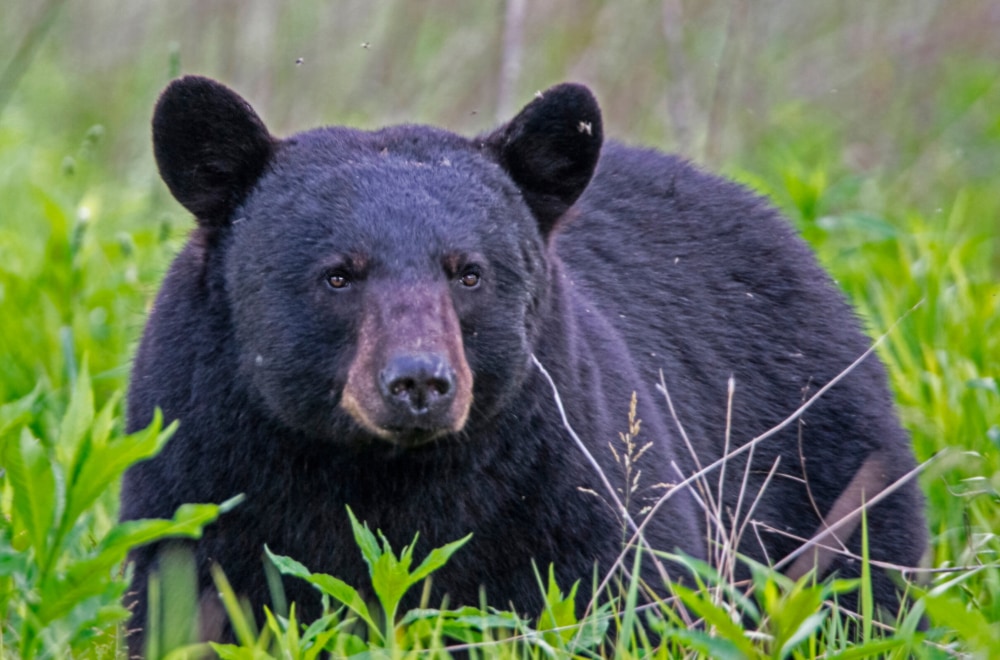Situations and Solutions
Bear in your yard: Bears may venture into your yard in search of food. Make sure all available food sources are properly disposed of or sealed, especially pet food and animal carcasses. If you are surprised by the bear, give the bear space to eventually wander off your property. After it is gone, locate the food source that may have attracted it and dispose of it.
Hiking and Camping in Bear Country:
- Make your presence known as bears do not like to be surprised. Make noise by singing loudly or wearing a bell. If possible, travel in a group and try to walk upwind so your scent is carried ahead of you. Try to avoid thick brush.
- Be careful to not set up camp on a well travelled road or path that bears may also use. Avoid sites where carcasses of fish or dead animals can be seen. Cook your food away from your tent, and avoid smelly foods so that odours do not permeate your tent or clothes. Store food away from your campsite and use bear-proof or airtight containers. If your campsite provides installed lines or poles, hang your food out of the bear’s reach. Hanging food from tree limbs is not effective because bears may break the branches or climb the tree for access.
- Keep a clean campsite. Garbage should be safely contained and packed out. Do not bury garbage, because the bears will smell it and dig it up. Bears have learned that coolers and backpacks may contain food so keep these items out of sight. Leave tent flies open when out of camp so bears can easily see that there is no food inside.
Natural History
There are two types of bears found in Alberta - the Grizzly and the Black Bear. Bears are the largest and most powerful carnivores, with bulky heads and strong legs. They generally move quite slowly with a clumsy, flat-footed walk, but they can move quickly if need be. Bears have poor eyesight and hearing and rely mostly on their sense of smell. Black Bears are better climbers than Grizzlies. The Grizzly ranges from dark brown to blondish in color and is up to 2.7 m in length. They can weigh 270-360 kg, with the female weighing less than the males. They are larger than the Black Bear and have a more prominent shoulder hump. Black Bears are more common in Alberta and range from brown to black in color. They are about 1.5 m long and weigh on average between 68-136 kg. Grizzlies have litter sizes of 1-4 cubs; Black Bear litters range from 1-5.
Bears are omnivorous. Grizzlies are very good fishers and they rarely hunt prey unless it appears sick or injured; they do feast on carrion. Black Bears usually eat nuts, fruits and seeds. They do not ordinarily prey on large animals but have been known to attack such things as deer and domestic animals. When the bear’s natural food supply is low they may overcome their fear of humans and enter human territory in search of food. They can become nuisance bears.


